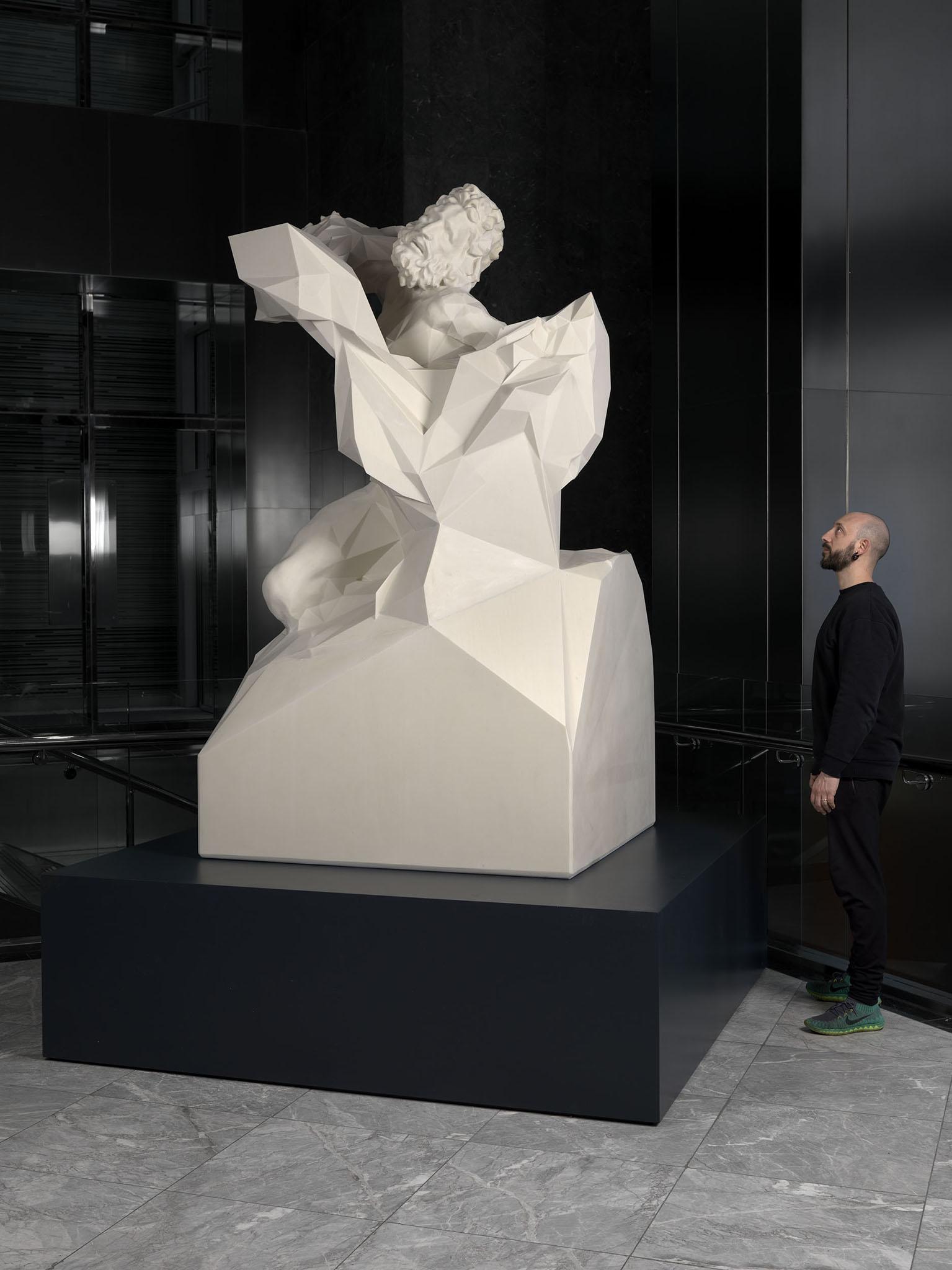Artist Quayola uses robots to create stunning 'classical' sculptures
Italian artist programmes robots with algorithms to recreate some of the world's most revered works of art – or rather, incomplete, and therefore unique, versions of the original


Your support helps us to tell the story
From reproductive rights to climate change to Big Tech, The Independent is on the ground when the story is developing. Whether it's investigating the financials of Elon Musk's pro-Trump PAC or producing our latest documentary, 'The A Word', which shines a light on the American women fighting for reproductive rights, we know how important it is to parse out the facts from the messaging.
At such a critical moment in US history, we need reporters on the ground. Your donation allows us to keep sending journalists to speak to both sides of the story.
The Independent is trusted by Americans across the entire political spectrum. And unlike many other quality news outlets, we choose not to lock Americans out of our reporting and analysis with paywalls. We believe quality journalism should be available to everyone, paid for by those who can afford it.
Your support makes all the difference.Experimenting with technology in art is nothing new, says the artist who goes by the name Quayola. But the way he is using technology is used to view the art itself just might be.
Quayola, an Italian-born, London-based artist who studied at the University of Arts, began working on audiovisual performances and video installations around 2006. Since the beginning of Quayola's career, code and algorithms have been his biggest creative tool, for a process that is largely based around the understanding that his prints, videos and sculptures are more documentations of that process, rather than an end result.
Rather than using a chisel, Quayloa is making sculptures with a robot, which he has programmed with algorithms to recreate some of the most revered works of classical sculpture – or rather, an incomplete, and therefore unique, version of the original.
Quayola’s use of computational methods, therefore, allows him to produce works through “a completely different logic – a different pair of ‘eyes’”, which then provide opportunities to discover new aesthetics.
“I am fascinated by how computer-vision systems and algorithms can provide alternative views on very familiar subjects,” he tells The Independent. “I am interested in the tensions and equilibrium between these different ways of seeing and perceiving the world around us.
“My work explores the space between radically different languages and tries to find some harmonious points in between.”
This is where his latest work, Laocoön, comes into play. When the Hellenistic masterpiece, Laocoön and his Sons, was unearthed from a Roman hillside in 1506, it sparked worldwide academic debate and has been called "the prototypical icon of human agony" in Western art.
According to Virgil, Laocoön was a priest who was killed – along with his two sons – by two serpents sent by the gods he had angered, for attempting to expose the warriors hiding inside the legendary Trojan Horse.
Quayola’s sculpture, then, takes on a kind of meta-narrative, with its creator unearthing life from beneath the apparently solid, inanimate block of stone. The end goal is to realise its seemingly limitless possibilities.

Adriano Aymonino notes in his essay on Quayola’s work how, for Michaelangelo, the sculptor had the singular task of revealing the form already contained in the marble. Quayola, by contrast, believes that artistic creation is the result of “a single choice among an infinite number of possibilities”.
Quayola is uninterested in the debate around the line that falls between art and technology, referring to the latter as a sort of “active collaborator”, with whom he can explore new visual languages and, ultimately, “new ways of looking at the world”.
“Today there is really no debate or meaningful boundary between analogue and digital music, photography, etc,” he says. “The boundary between physical and digital in general is getting really blurred, and for me that is a very interesting ground to explore.”
Join our commenting forum
Join thought-provoking conversations, follow other Independent readers and see their replies
Comments